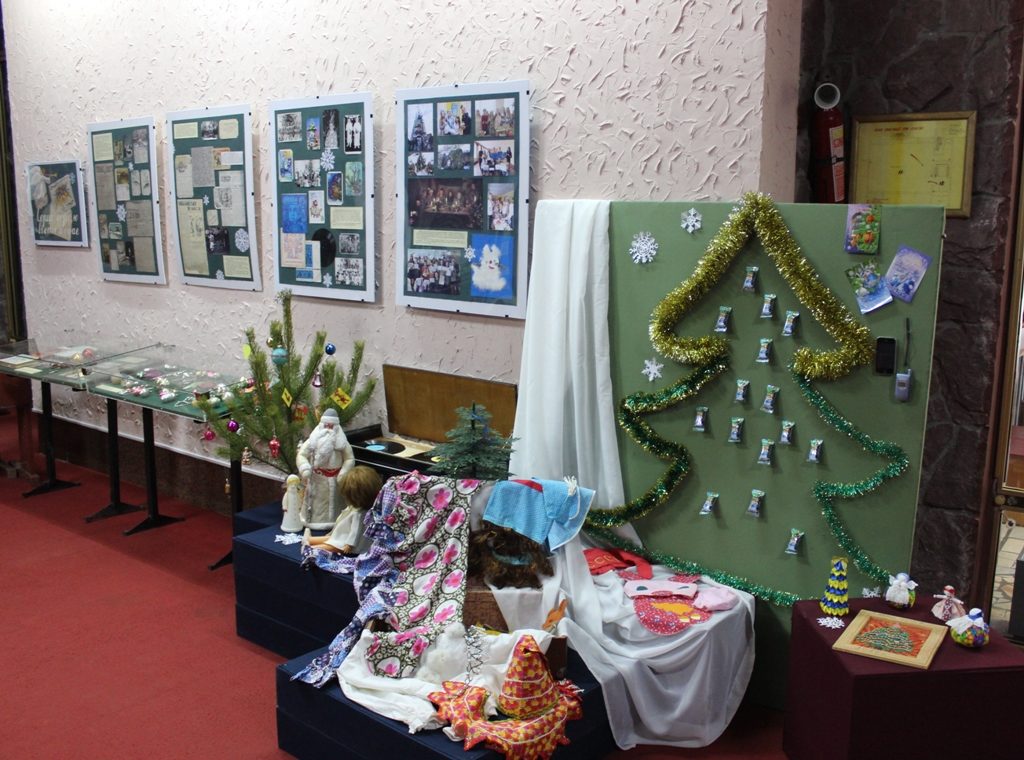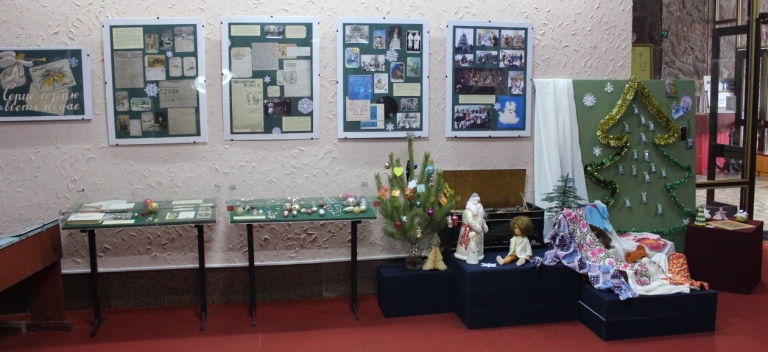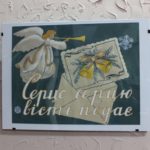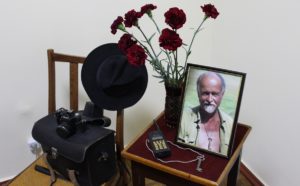18 December in the Military History Museum - a branch museum of the Chernigov istorychnouj V. Tarnowska was a new outdoor exhibition "Heart to heart the message takes".

For many people, the most favorite time of the year - New Year and Christmas holidays. Celebrating them has become a good tradition in many countries around the world. In the XIX - early XX centuries. the celebration of the New Year was closely connected with Christmas. These days, people greeted each other and expressed their sincere wishes. In addition to oral greetings, greeting cards were common.
The first Christmas card was painted by English artist William Dobson. Do 1843 Dr.. in London, at the request of Henry Cole, a batch of leaflets had already been published 1000 copies. The author of the picture was John Horsley.
Mass issuance of postcards and postcards has begun 1869 Dr.. in Austria-Hungary. Innovations have been appreciated in many countries. In France, Germany postcard began to be issued from 1870 р., England, Switzerland - with 1871 р., in Russia - 1872 Dr.. At the turn of the XIX - XX centuries. this fascination became widespread.
In Russia, for the first time Christmas cards were issued in 1898 Dr.. circulation 10 thousands of copies. This series included 10 drawings by various artists.
After the turbulent revolutionary events of 1917–1921, society was influenced by militant atheism. Christmas cards were banned as an obsolete "bourgeois" relic.
The New Year's card underwent changes in appearance - the religious component was excluded from them. Greeting postcards wore exclusively socio-political, agitational nature. The memory of Christmas was criminally liable, however New Year's Eve 31 December on 1 January was celebrated unofficially. Only 1937 Dr.. by decree of the Soviet People's Commissar of the USSR was allowed to celebrate the New Year.
The New Year's greeting card played a special propaganda role during the Second World War, when she returned after a decade of banning.
During the war years, the New Year was celebrated in different ways - depending on life circumstances. Thousands of people fought at the front, and only the invisible connection by means of correspondence connected relatives through great distances.
Many Ukrainians were in the occupied territories. They had to adjust to the new order, according to which the celebrations were organized.
Many young people were deported to Germany. The "Eastern Workers" were somehow drawn into the orbit of European life, therefore, they partially adopted the local New Year and Christmas traditions.
The traditions of the New Year's holiday were formed in the 60's. ХХ ст. Costumed mornings were arranged for the children. Adults were also waiting for the New Year, celebrated it with family and friends, believed, that with the advent of the New Year life will change for the better, expressed sincere wishes to each other. New Year's greetings were common, which with each passing year and the new decade became more and more. Overcoming distances, heartfelt congratulations found their recipients.
In the new millennium, postcards have been replaced by electronic greetings. The postcard is becoming almost a museum rarity.













More Stories
Chernihiv seals from the Radomyshl museum
To the second anniversary of the defense of Chernihiv Oblast
Life is devoted to science